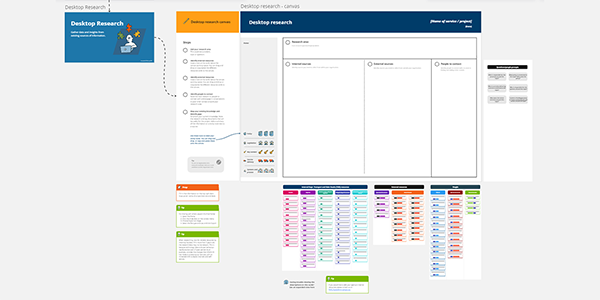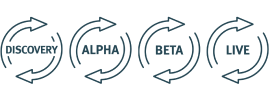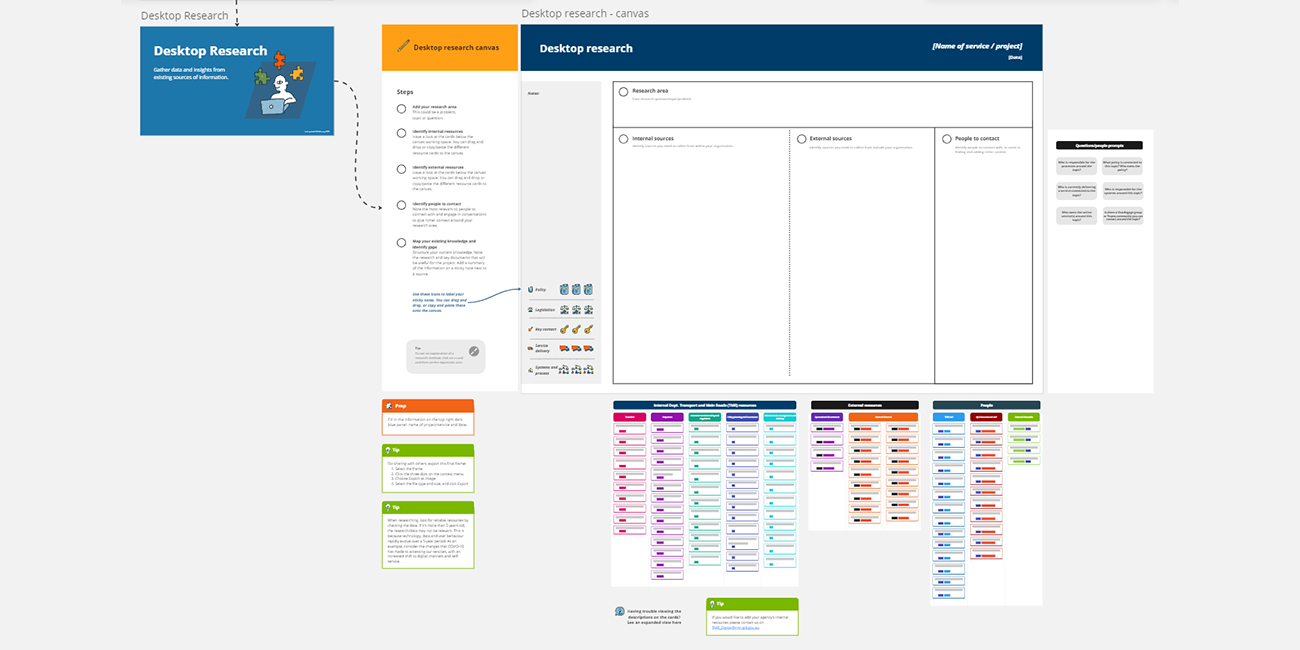Desktop research
Desktop research (also known as secondary research) involves the use of existing sources of information to gather data and insights on a topic of interest. This type of research relies on information that has already been collected and published by others, such as academic articles, government reports, market research studies or existing project documentation. It is often used to gather background information, support primary research, or to inform decision-making processes.
Desktop research is an important early step, to make sure you’re using your time and resources efficiently and not repeating something that has already been done. It should be the starting point of any research, to avoid reinventing the wheel.
For most benefit, desktop research should be done early in the Discovery phase. It can also be revisited during the other stages of the design process (Alpha, Beta, Live) as you further uncover useful information as the project develops.

Outcomes
- An overview of relevant resources around a specific research area
- A basis for developing hypotheses and research questions
- A list of key people that can contribute their expertise or knowledge
- Clarity on approaches that have worked or failed in the past
- Identification of research gaps or areas for future exploration
- Insights that can be used to inform decision-making
- A deeper understanding of a topic, including its history, current state, and future prospects
The stages

The four stages of the Service design and delivery process are Discovery, Alpha, Beta, and Live.
Digital service standard
This play helps your service meet the following criteria of the digital service standard.
Share your feedback
Take our short feedback survey and tell us what you thought of this play, or report an issue.
This playbook is a beta product, your feedback helps us improve it for everyone.
Contact us
If you need advice, mentoring, or guidance on how to use the playbook, or you’d like to contribute to the playbook, you can contact us.
